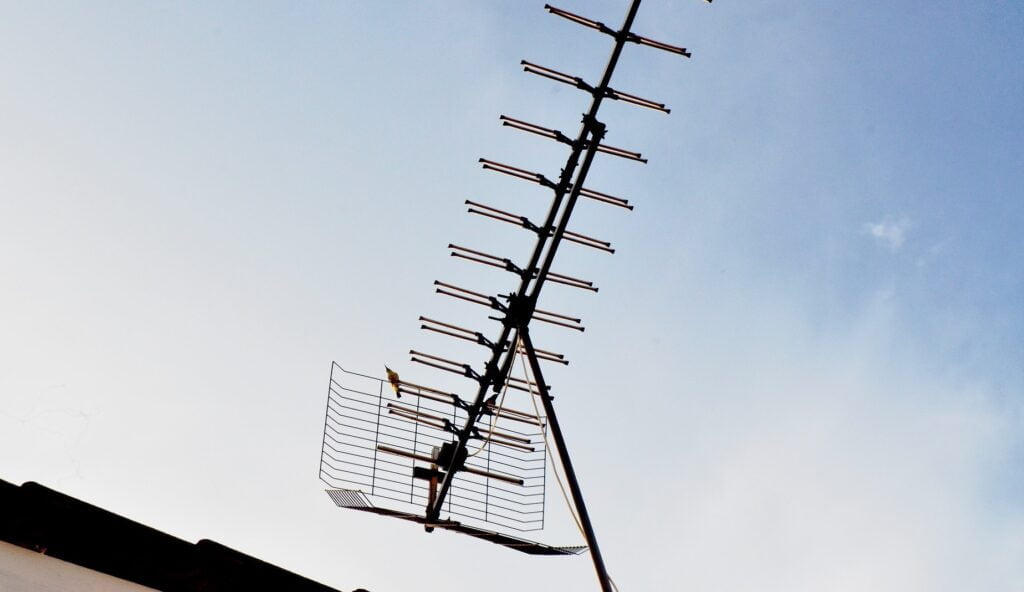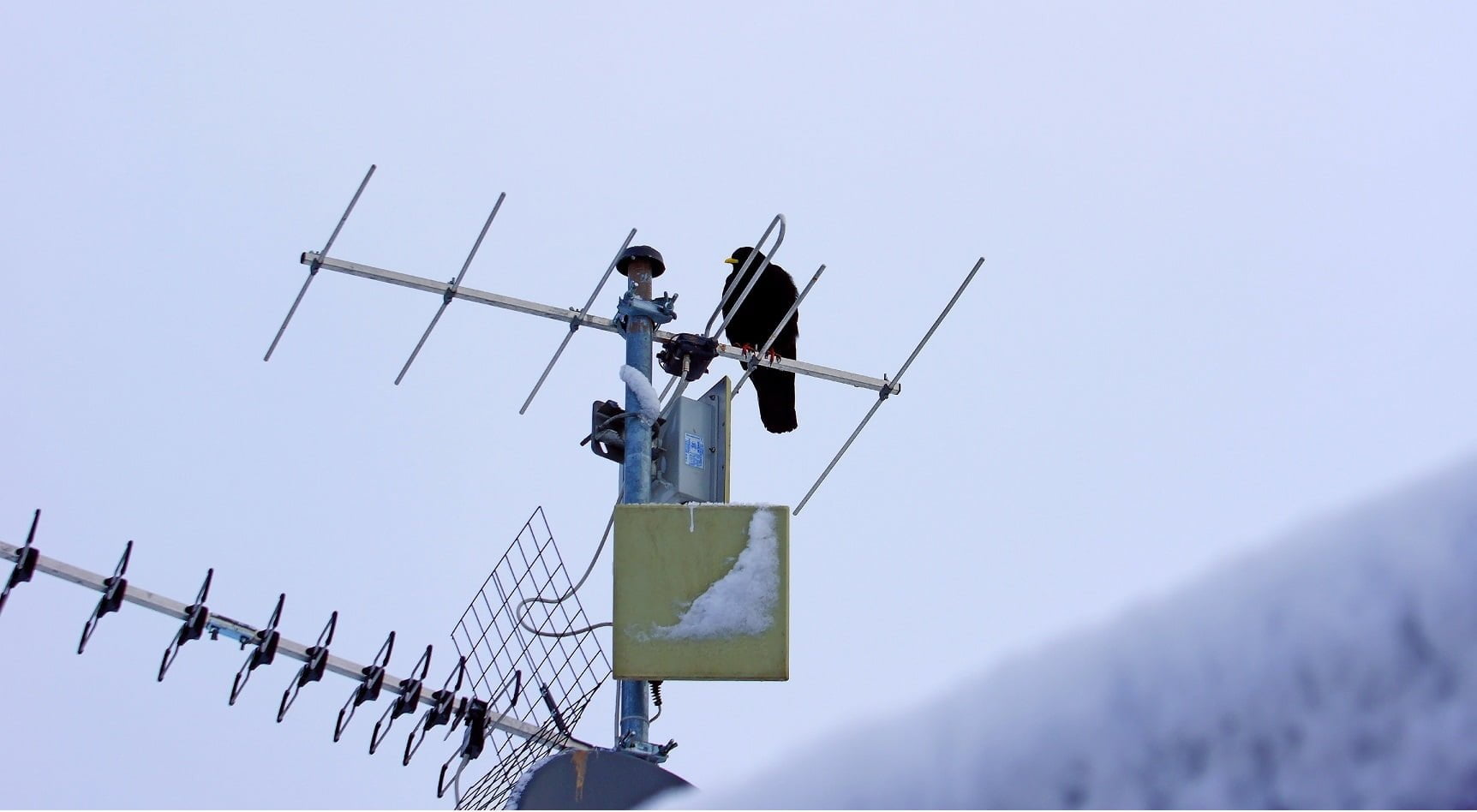When your television set becomes your best friend, particularly on boring days, ensuring optimal reception becomes crucial. With this in mind, we’ve compiled everything you need to know about TV antennas. Who knows? This information might come in handy.
Even if you own the latest high-definition television, you won’t be able to maximize its potential without optimal reception, which can be compromised by a faulty antenna, missing coaxial cable, or other issues.
Understanding the basics of TV antennas can empower you to make informed decisions. Here’s a simple guide to get you started.
What is a TV Antenna?

A TV antenna, also referred to as an aerial or TV tuner, is a device composed of metals (ideally lightweight) and coaxial cables.
Its purpose is to capture radio frequencies from nearby transmission towers and connect them to your television set.
What are the Parts of the Antenna?
Parts of the antenna differ with every type, but the most basic parts are reflectors, directors, poles, circuit box, stand or base and coaxial cables.
Part 1: Antenna Reflector
The antenna reflector can be a stand-alone device or is integrated within an antenna that bounces off radio frequency energy. This modifies the radiation or energy and thus increases the gain of radio frequencies.
Part 2: Antenna Director
The antenna director, on the other hand, points or focuses on the emission of radiation in a given direction.
Part 3: Poles, Circuit Box, Stand Or Base
The poles, circuit box, stand or base are what keeps the antenna in place. They are what holds the antenna together for it to be mounted properly.
Part 4: Coaxial Cable
The coaxial cable is the electrical cable connecting the antenna to your television. The coaxial cable or coax are made up of layers of insulated electrical conductors that transmit radio frequency signals.
How Do TV Antennas Work?
TV antennas work by capturing radio frequency signals that are transmitted by television stations.
These signals contain audio and video information that is encoded and transmitted over the airwaves.
Here’s a simplified explanation of how TV antennas work:
- Signal Capture – The TV antenna is designed to receive the radio frequency signals broadcasted by TV stations. The antenna consists of metal elements that are specifically shaped and positioned to capture these signals from the air.
- Signal Conversion – Once the antenna captures the radio frequency signals, it converts them into electrical signals. These electrical signals carry the audio and video information encoded in the broadcast.
- Signal Amplification – In some cases, the captured signals may be weak, especially if the TV station is far away or there are obstructions between the antenna and the station. In such situations, the antenna may include an amplifier that boosts the strength of the signals.
- Signal Transmission – The amplified electrical signals are then sent through a coaxial cable, which carries the signals from the antenna to the TV. The coaxial cable connects to the TV’s tuner, which processes the signals for display.
- Signal Decoding – The TV’s tuner decodes the audio and video information from the electrical signals received through the antenna. The decoded information is then passed to the TV’s display and speakers for you to see and hear.
It’s important to note that TV antennas receive free over-the-air broadcast signals, which are different from cable or satellite signals.
By using a TV antenna, you can access local channels and potentially enjoy high-definition broadcasts without the need for a cable or satellite subscription.
What are the Types of Cable TV Antennas?
Based on the quality of the signal that you are receiving in your area, you can choose the right type of antenna to get the best possible reception.
Type 1: Digital or Analogue
The difference between the two is how radio frequencies are transmitted from the tower to your cable television. Analogue antennas or analogue transmission transmit radio signals through the airwaves while digital transmission transmits compressed data in digital packets.
Type 2: Very High Frequency (VHF) or Ultra High Frequency (UHF) or a combination
Radio frequencies transmitted by cable TV antennas are measured in megahertz.
30 megahertz are considered very high frequency while it is considered ultra-high frequency if it is anything higher than 300 megahertz. A combiner or splitter may also be used to receive signals at different frequencies.
Type 3: Uni-directional or multi-directional
Antenna types are also based on the direction they receive signals. Some antennas are uni-directional or receive signals from only one direction or they can be multi-directional where they can receive radio frequencies from different directions.
Type 4: Outdoor or Indoor Type
An antenna can also be indoor or outdoor. An indoor antenna can easily be set up inside your home. Though most prefer the outdoor antenna, set up by professional technicians to get the best possible signal reception for clearer images on your television set.
Factors Affecting Antenna Reception
- Distance from Broadcast Towers – The closer you are to the broadcasting towers, the stronger the signal you will receive. Distance is a crucial factor in determining the effectiveness of your antenna.
- Obstacles – Buildings, trees, and other structures can obstruct TV signals, leading to poor reception. Positioning your antenna in an unobstructed location can improve signal strength.
- Antenna Height – Mounting your antenna at a higher elevation can enhance reception by reducing interference from nearby obstructions and improving line-of-sight to broadcast towers.
Installation and Setup
- Location – Place your antenna in a location with minimal obstructions and facing the direction of the nearest broadcast towers.
- Orientation – Adjust the orientation of your antenna for optimal signal reception. Experiment with different positions to find the best signal strength.
- Amplification – Consider using a signal amplifier, especially for long cable runs or weak signal areas. Amplifiers can boost signal strength and improve overall reception quality.
Popular TV Antenna Brands
- Mohu – Known for their sleek and modern designs, Mohu offers a range of indoor and outdoor antennas with excellent reception capabilities.
- Winegard – Winegard specializes in outdoor antennas designed to withstand various weather conditions while delivering superior performance.
- Channel Master – Channel Master offers a variety of indoor and outdoor antennas known for their durability and reliability in capturing over-the-air signals.
How Do You Choose the Antenna that’s Right for You?
There are several things to consider before installing your TV antenna. First, you must get an antenna that is compatible with your device or television set. Some TVs require a digital antenna, while some still need an analogue antenna to function.
You must also consider your distance to the nearest transmission tower. If you are a bit far from it, you will need a high-powered antenna and preferably an outdoor one. You must also consider if there are plenty of interference to your antenna like electrical lines, trees, buildings, etc.
If you find it hard to choose what’s right for you, you can always call a professional licensed technician, to have your area and your device checked for the right antenna.
It is always safer and better to consult with professionals when it comes to your cable TV antenna. You do not have to climb heights and figure out cable wires and where they should connect to, all these while you are assured of a good TV signal so you can just sit back and relax and enjoy your favorite show.
Also Read: The Best DIY Guide for Air Conditioner Installation
Well, what do you think about the article?
Do you like what you have read about the “TV Antenna 101: Helpful Things You Should Know“? If so, please comment down below. We would love to hear your thoughts about this.
To see more content like this check the business section of Money For My Beer.

We are antenna experts ready to help with your cabling needs, antenna installation, and antenna repairs. NBN Private Technician with over 40,000 successful job tickets in the greater Sydney Region.

